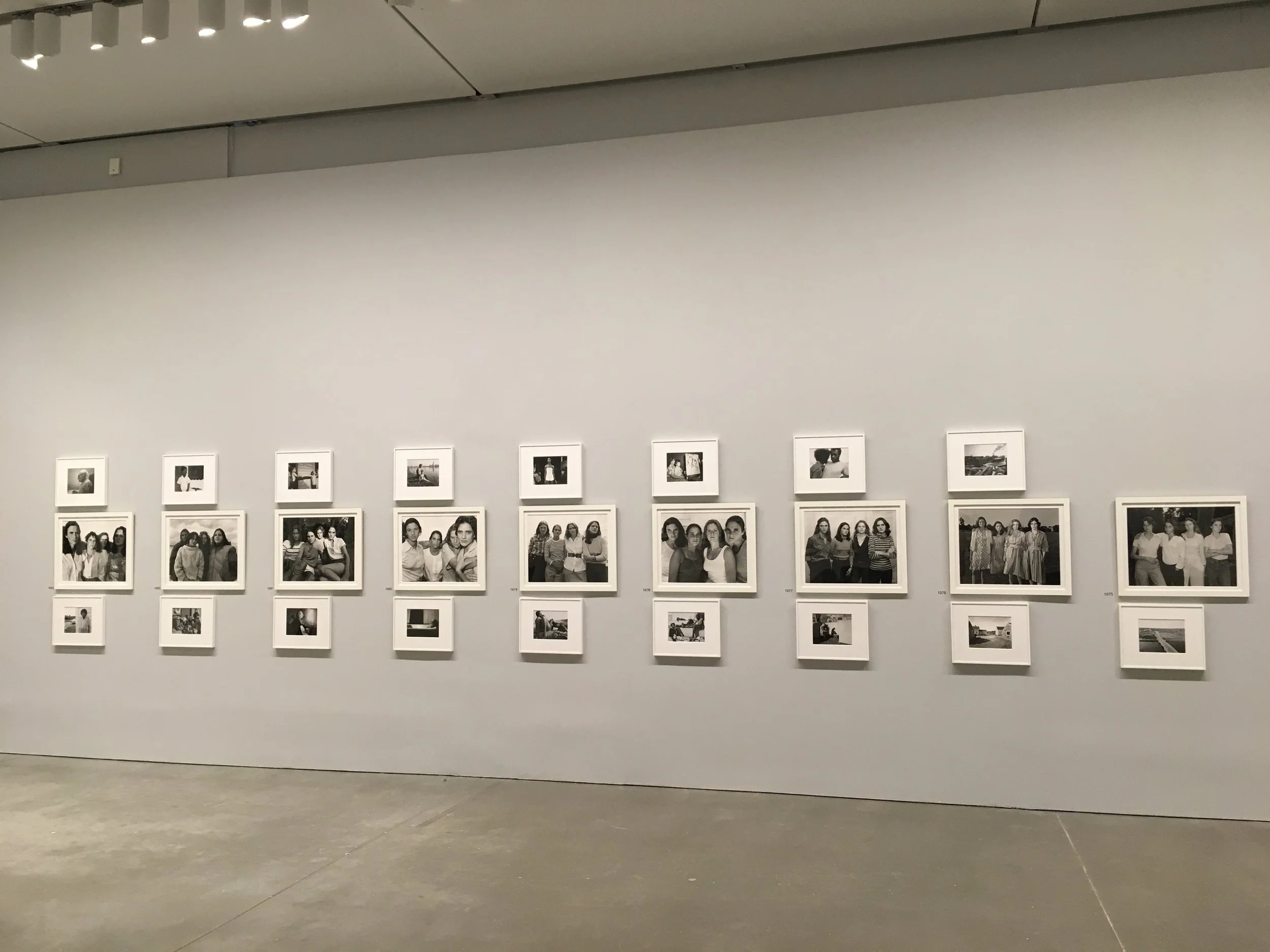2017 was a big year for me creatively, due in large part to the opportunities I had to see some absolutely incredible exhibitions. I can't accurately describe the impact of experiencing good (and frankly, sometimes bad) work has on my studio practice, but I often find myself hungry and motivated to hit the studio hard afterwards. In the next few weeks I'll be posting some thoughts on the exhibitions which moved me the most in 2017, in no particular order, starting with Nick Nixon: Persistence of Vision at the ICA Boston.
Nick Nixon: Persistence of Vision at ICA Boston
Nick Nixon in this room. This is not merely a result of his making the 112 images in the show, or holding direct eye contact with the visitor in a few pictures, or even that the subject matter is deeply intimate (which, much of it is) but it is in the the exhibition's modest presentation - subtle, rhythmic, and cyclical, that Nixon's work sings.
I had the great pleasure of being instructed by Nixon at Massachusetts College of Art and Design. He began each class by reading something out loud to us, usually excerpted fiction from someone like Jack London or a short essay, and he often shared with us something he was currently working on. His flawless contact prints are perfectly humble and insanely detailed. I will never forget the day he brought The Brown Sisters, with him to class, the series of yearly portraits Nixon has been making of his wife, Bebe, and her three sisters since 1975, and let us spread them out in order. Being in the exhibition at the ICA felt the same way. It feels to me more like a living room slide-show than a cavernous museum gallery, and there's juuuust as much interpretive material (on handy guides which can be carried through the room, my preference over excessive wall text) necessary to guide the viewer without insisting on a particular experience. The prints are lush, and the starkness of the room allows you to really see the images, their intersecting narratives, their recurring characters, their humanity.
When considering the dynamic range of Nixon's ouvre it is almost necessary to treat The Brown Sisters, as the backbone, which is exactly what Eva Respini, Barbara Lee Chief Curator, with Jessica Hong, Assistant Curator, have done. This large, square gallery comfortably accommodates The Brown Sisters in chronological order, and each year is flanked with an image or two from Nixon's other work from that same year, each hanging above or below Bebe and her sisters. All are in crisp white frames, unfussy and to the point, just like Nixon. I often find viewing photography in a museum setting to be difficult due to scale and layout, and I have strong opinions about the consideration of lighting, framing, and glass which allow for the full tonal range to be perceptible (it is appalling how often an incredible photograph is rendered banal due to poor lighting and framing!). Nixon's talent for photographing skin, hair, and the infinitesimal details of life are able to be truly appreciated, and the depths of his grey tones are delicious. There is enough space in this room to step back and behold many years, or have a private moment with one year's set of images, and the minimal scale of Nixon's prints become larger as a whole. The natural chronological passage of viewers allows for an organic ebb and flow - some pausing longer to examine, reflect, and internalize the expanse of time and space before them. Nixon is neither a participant nor observer but somewhere in between, and his photographs of those who aren't part of his immediate family - especially the elderly, ill, and impoverished - are treated with the same intense yet quiet reverence.
I find him in my work all the time. He once told me that my work was better when I "made pictures with my vagina" which, in his special, bizarro way, was exactly what I needed to hear, even though it's taken me many years to make photographs that are just starting to get there. I always appreciated his candor and his constant demand that our work go deeper, challenge more, and force us to work through our resistances. He encouraged us to try new approaches, embrace failures, and go for the jugular. He photographs with an unparalleled technical mastery which has become intuitive at this point in his career, and started us toward the process of figuring out how to find our own gestures of photographic intuition with integrity and grace. Taking in his work now, continually feeling reverberations of his teaching in my own practice, I am reminded of, and moved by, his remarkable Persistence of Vision.
all photographs in this post were taken by lydia see at ICA Boston - images are of Nick Nixon's photographs and should not be used without credit to Nick Nixon / lydia see







